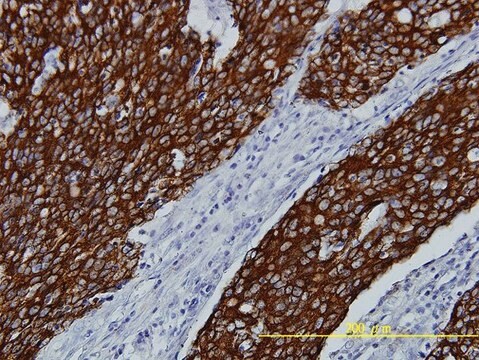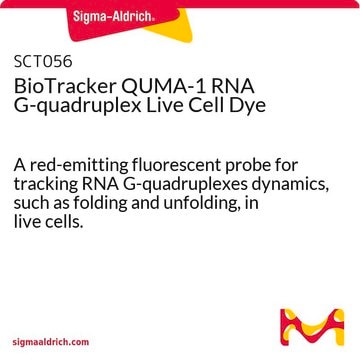MABE917
Anti-DNA G-quadruplex structures Antibody, clone BG4
clone BG4, from Escherichia coli
Synonym(s):
DNA G-quadruplex (BG4)
About This Item
Recommended Products
biological source
Escherichia coli
Quality Level
antibody form
purified antibody
antibody product type
primary antibodies
clone
BG4, monoclonal
species reactivity
human
packaging
antibody small pack of 25 μL
technique(s)
ChIP: suitable (ChIP-seq)
ELISA: suitable
immunocytochemistry: suitable
shipped in
ambient
target post-translational modification
unmodified
General description
Specificity
Immunogen
Application
ChIP-seq Analysis: A representative lot detected DNA G-quadruplex structures in ChIP-seq applications (Hansel-Hertsch, R., et. al. (2016). Nat Genet. 48(10):1267-72).
ELISA Analysis: A representative lot detected DNA G-quadruplex structures in ELISA applications (Biffi, G., et. al. (2013). Nat Chem. 5(3):182-6).
Immunocytochemistry Analysis: A representative lot detected DNA G-quadruplex structures in Immunocytochemistry applications (Biffi, G., et. al. (2013). Nat Chem. 5(3):182-6).
Quality
Physical form
Other Notes
Not finding the right product?
Try our Product Selector Tool.
recommended
Storage Class Code
12 - Non Combustible Liquids
WGK
WGK 2
Flash Point(F)
Not applicable
Flash Point(C)
Not applicable
Certificates of Analysis (COA)
Search for Certificates of Analysis (COA) by entering the products Lot/Batch Number. Lot and Batch Numbers can be found on a product’s label following the words ‘Lot’ or ‘Batch’.
Already Own This Product?
Find documentation for the products that you have recently purchased in the Document Library.
Our team of scientists has experience in all areas of research including Life Science, Material Science, Chemical Synthesis, Chromatography, Analytical and many others.
Contact Technical Service







